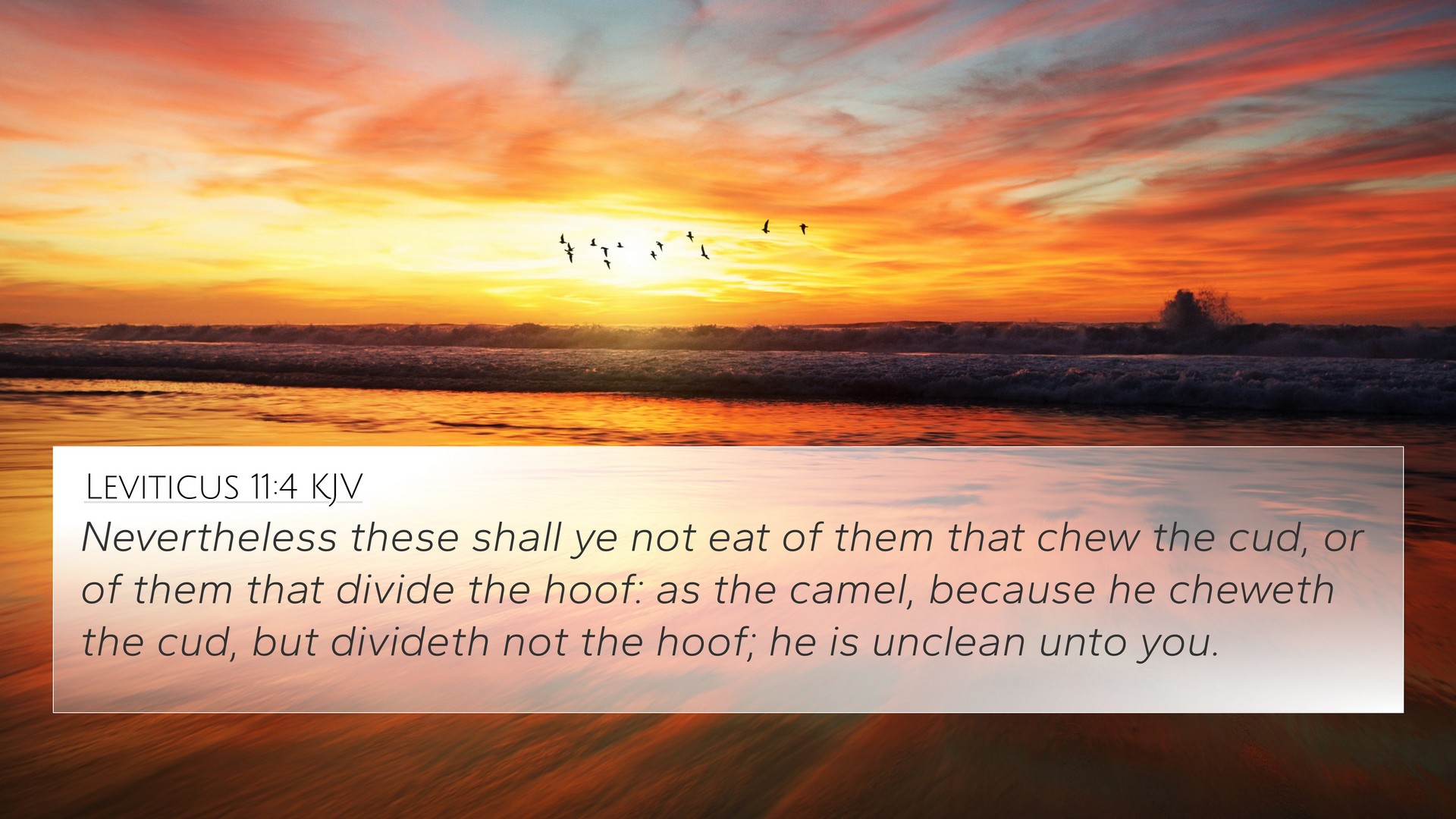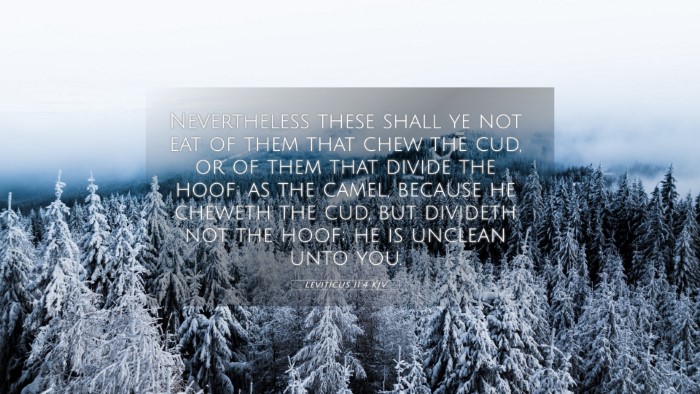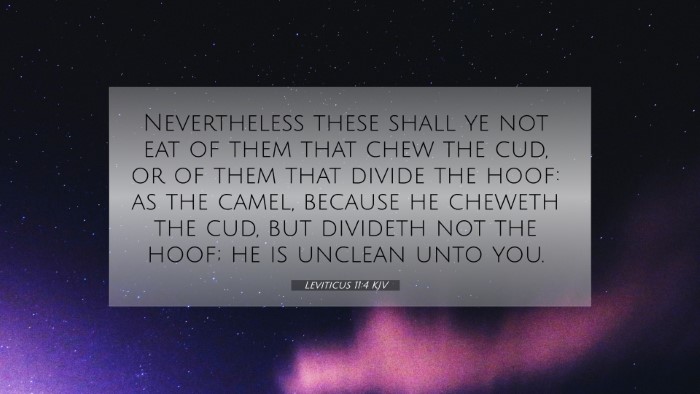Understanding Leviticus 11:4
Leviticus 11:4 states: "Nevertheless, these shall ye not eat of them that chew the cud, or of them that divide the cloven hoof: as the camel, and the hare, and the coney." This verse is part of the dietary laws provided to the Israelites, emphasizing the importance of holiness and set-apartness.
Meaning and Insights
This verse falls within a broader context of God's instructions to the Israelites regarding clean and unclean animals. The classifications of animals served not only a practical purpose but also conveyed spiritual meanings about purity and obedience to God's law. Below are key insights drawn from classic commentaries:
- Matthew Henry: Henry highlights that the dietary distinctions impose a sense of holiness on the people, as they were to remain separated from the practices of neighboring nations. The mention of particular animals that do not fit the criteria for clean animals serves as a reminder of God’s sovereignty over creation.
- Albert Barnes: Barnes focuses on the physical characteristics that define clean animals—those which both chew the cud and have a divided hoof. He emphasizes that the camel (which has a single toe) and other specifically mentioned animals fail to meet these criteria, serving as examples to teach the Israelites the importance of following divine commandments in all aspects of life.
- Adam Clarke: Clarke elaborates on the significance of these divine regulations, linking them to the need for preparation to enter God’s presence. He suggests that adhering to dietary laws symbolizes a commitment to living in accordance with God's commandments, reinforcing physical obedience as a reflection of spiritual integrity.
Bible Verse Cross References
Leviticus 11:4 connects with several other verses throughout the Bible, creating a tapestry of scriptural meaning. Below are notable cross-references that enhance our understanding of this verse:
- Deuteronomy 14:7-8: Expounds on similar laws regarding clean and unclean animals.
- Isaiah 66:17: Warns against those who eat unclean animals, indicating the ancient significance of these dietary laws.
- Hebrews 10:1-4: Reflects on the idea of the Old Testament regulations as a shadow of greater spiritual realities, pointing toward the ultimate sacrifice of Christ.
- Romans 14:14: Discusses dietary considerations in the light of New Testament freedom vs. Old Testament restrictions, showcasing a shift in the application of these laws.
- 1 Timothy 4:4-5: States that nothing is to be rejected if it is accepted with thanksgiving, highlighting the transition in understanding clean and unclean.
- Mark 7:19: Jesus declares all foods clean, illustrating a significant change in the understanding of dietary laws.
- Acts 10:15: God’s declaration to Peter about food reflects an evolving understanding of what is clean, signaling a new era in the relationship between God and His people.
Thematic Connections
The instructions found in Leviticus 11:4 are emblematic of the larger themes of holiness, purity, and divine law that run throughout the Scriptures:
- Holiness: The concept of being set apart is foundational in both the Old and New Testaments.
- Obedience to God’s Law: The numerous laws and commandments given to Israel serve as a precursor to the call of modern believers to live by the Spirit and fulfill the law through love.
- Spiritual Lessons: The unclean animals symbolize sin and separation from God, further requiring believers to examine what they allow into their lives.
Applying Cross-Referencing Tools for Deeper Understanding
Utilizing bible cross-reference guides and tools can significantly enhance one's study of the Scriptures. Here are some ways to implement these methods:
- Employ a Bible concordance to explore various translations and comparisons of similar verses across the Bible.
- Incorporate Bible chain references that connect themes such as holiness, dietary laws, and their implications for Christian living.
- Engage in cross-reference Bible study methods that involve comparing the messages of different books and authors, particularly when studying themes related to law and freedom.
Conclusion
In summary, Leviticus 11:4 not only provides specific dietary laws but also underlines profound spiritual lessons regarding holiness and obedience to God. The connective threads found through cross-referencing with other Scriptures provide a rich field for exploration, encouraging believers to deepen their understanding of God’s everlasting principles.
Further Exploration
For those eager to delve deeper, consider investigating:
- Identifying connections between Old and New Testament teachings on dietary laws.
- Comparative study of Pauline epistles for their insights on law and grace.
- Cross-referenced themes in the Bible that align with the teachings of holiness and purity.


